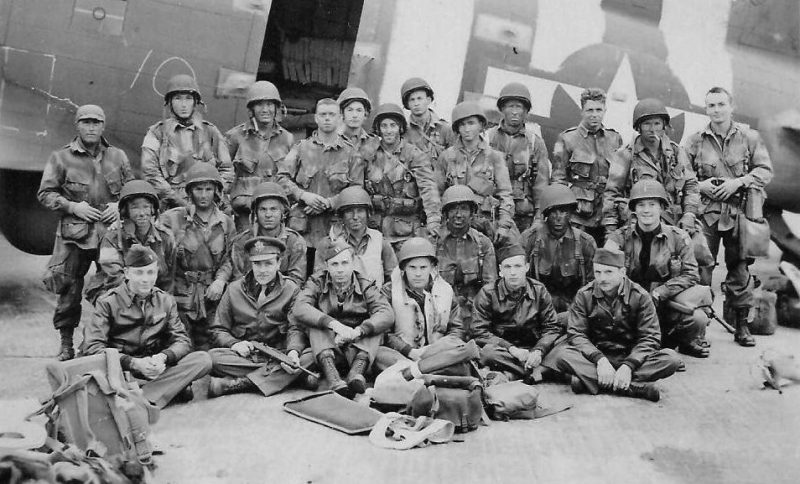On Tuesday, August 2nd, 2016, the Soldiers of F Company, Pathfinders, 5th Battalion, 101st Combat Aviation Brigade, 101st Airborne Division took part in a ceremony that deactivated the pathfinders after seventy-two years of service.
The motto of first in-last out is how the U.S. Army Pathfinders describe themselves, starting in the 1940s as a paratrooper regiment during World War II. Their missions were to infiltrate areas before the full out airborne assaults and set up drop points to guide aircraft and show the other paratroopers where they should be landing.
Their very first mission was on D-day 1944 in Normandy, France where they would light the way for other soldiers. Capt. Frank Lillyman was the first commander of what would become the 101st Pathfinder Company.
With over 70 years of excellence, the Pathfinders have been one of the most vital parts of some of the United States’ biggest conflicts. Whether it is setting up landing points during the Vietnam War or conducting static-line jumps, this company is among the best in terms of reliability.
In January 1991, the Pathfinders lit the way and helped set up forward armament and refueling points to support the longest and largest air assault in history during Operation Desert Storm. The 101st Pathfinders are committed to the profession of Arms.
Lt. Col. Ryan P. Boyle, the commander of 5th Bn., 101st CAB. had this to say “The last time something of this magnitude occurred for our pathfinders was Oct. 16, 2013 when Fox Company conducted its final static-line jump. It has been almost three years since then but the Soldiers standing on the field today continue to carry on the legacy of excellence of this proud unit. Before we bid farewell Fox Company Pathfinders, we pause to recognize the unique history and legacy of this incredible organization.”
Being able to trace their legacy all the way back to June 6, 1944, is like a badge of honor to the 101st Pathfinders. They bring more to the table than just a storied past; the 101st Pathfinders provide a unique set of skills that only they possess which makes them different from other infantry units.
Staff Sgt. Adam Brousseau, a Pathfinder team leader with Co. F, 5th Bn., 101st CAB. stated: “The main missions for Pathfinders are downed aircraft recovery, personnel recovery, landing zone reconnaissance and pick-up zone control, we have a specialized mission. Most infantry units don’t train on what we do. We’re experts at anything relating to aircraft because we train with the air crews and pilots pretty much every day. The Pathfinder inactivation is definitely a loss of an asset.”
As the storied chapter of the Pathfinders comes to an end, they know there is light at the end of the tunnel. The Pathfinders will be reassigned to a different division but will be kept in teams to preserve their expertise and capabilities of the Pathfinders for the infantry brigades to capitalize on.
Capt. Daniel Marshall, company commander had this to say: “The inactivation, it’s unfortunate, it’s nothing that any of us want. The good thing about that is the capabilities of the Pathfinders are going to stay in the division. We’re going to push a team down to each brigade combat team, this last training cycle we prepared and evaluated the Pathfinders so the brigades will get well-trained teams. The division will still have the capabilities of these Pathfinders, it’s just now they will be located within the brigades instead of a single company.”
Pathfinders are different from other than other infantry units since they are able to influence operations by getting information to higher headquarters and creating ways to get larger forces into the fight.
“The Pathfinders are independent and able to execute the commander’s intent, they are able to accomplish the mission in austere environments under minimal guidance. The Pathfinders are infantry first. What separates them from the other Screaming Eagle infantrymen is their unique, Pathfinder skill set. Their ability to select and prepare helicopter landing zones and conduct landing zone operations is unparalleled throughout the division. They can operate 10 to 15 kilometers ahead of our forward line of troops and bring in a brigade-sized air assault all with only 8 to 11 personnel. They can conduct reconnaissance, establish the landing zone and perform air traffic control for the air assault.”
“While it may be a statement of the obvious, Fox Company will forever remain unique,” Boyle said. “Conceived out of necessity, and forged in battle, this team has accomplished so much and has done so under dangerous and difficult conditions, and asked for nothing in return. This is a credit to all those who have served in your ranks. You represent all that is good in our great nation.”
